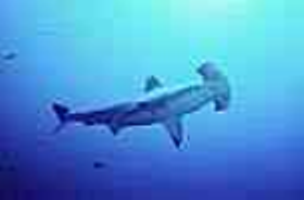Understanding daily maintenance requirements of a top-level predator is an important step toward understanding its ecological impact within a nursery ecosystem.
Juvenile S. lewini were fed a range of daily ration levels to examine the effect of feeding rate on growth and gross conversion efficiency. The von Bertalanffy growth model yielded the best fit to the data, predicting a maintenance ration of 115 kJ kg−1 day−1 (3.4% body weight (BW) day−1) and a maximum growth rate of 38 kJ kg−1 day−1. This finding is in agreement with the previous prediction of high energetic requirements for S. lewini. In combination with the hypothesized food limitation within Kāneohe Bay, this result may explain the observed high mortality rates of S. lewini. Gross conversion efficiency, K 1, ranged from −36% to 34%, with maximum efficiency at feeding levels of 5.1% BW day−1. The growth conversion efficiency of S.␣lewini is similar to that of lemon sharks and teleost fishes. Growth rates of juvenile S. lewini are possibly restricted by their high metabolic rate, limited food availability and foraging inexperience. By directly examining the effect of ration size on growth and food conversion, it was possible to resolve discrepancies between earlier studies, which used respiratory metabolism and gut content analyses.
Estimation of daily energetic requirements in young scalloped hammerhead sharks
04april2007
Juvenile scalloped hammerhead sharks, Sphyrna lewini, are apex predators within their nursery ground in Hawaii.
